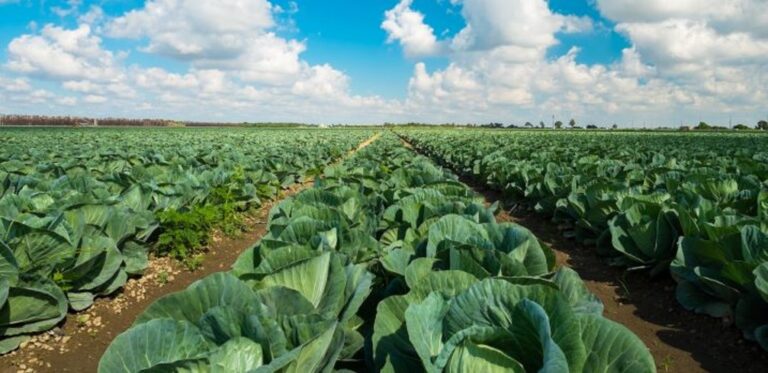As many of those reading this newsletter are aware, FDA has done a lot of sampling around produce operations in the last months. It appears the agency has not found any direct source of the recurring outbreak strains of E. coli O157:H7, but they are making it clear that managing leafy greens risk is a major current and future focus for FDA.
In an analysis of the pathogenic E. coli outbreaks that had occurred in leafy greens from California and Arizona growing regions since 2017, FDA findings suggested several plausible routes for contamination – with cattle on adjacent lands determined to be the most likely source of the outbreak strains. Thus, with cattle being a persistent source of pathogenic E. coli, FDA has declared it to be “a reasonably foreseeable hazard in the California Central Coast leafy greens growing region, and specifically of concern in the South Monterey County area of the Salinas Valley growing area.”
This means that farms that are subject to FSMA’s Produce Safety Rule (PSR) are required to take all measures reasonably necessary to identify, and not harvest, produce that is likely to be contaminated. This is not new, as the PSR specifically lists domestic and wild animals as being one of the five major routes of contamination. However, leafy greens growers should take note of FDA’s reiterated emphasis on this as being a reasonably foreseeable hazard, and ensure they put extra emphasis, themselves, on assessment and prevention.
FDA is not, however, expecting growers to be able to completely eliminate animal impacts on their own. Rather in its investigation report FDA strongly encourages collaboration in the agricultural community (i.e., livestock owners and leafy greens growers, state and federal government agencies, and academia) to understand and address the challenge of successful coexistence of the various types of agricultural industries to ensure food safety.
FDA does also make some recommendations specifically to leafy greens growers in the California Central Coast Growing Region (encompassing the Salinas Valley and Santa Maria growing regions), with the overall specification to “consider this particular strain of E. coli O157:H7 a reasonably foreseeable hazard.” Which means, according to the PSR, if there is a reasonable probability that grazing animals, working animals, or animal intrusion will contaminate covered produce:
- Measures must be implemented to assess relevant areas during growing, and if significant evidence of potential contamination is found,
- The farm must identify, and not harvest, covered produce that is reasonably likely to be contaminated with a known or reasonably foreseeable hazard (§§ 112.83 and 112.112).
- Harvested covered produce must be handled during covered activities in a manner that protects against contamination with known or reasonably foreseeable hazards.
Beyond the requirements of FSMA, FDA also recommends that leafy greens growers
- Conduct a root cause analysis when a foodborne pathogen is identified.
- Participate in specified local groups/studies to identify actions to reduce risk of STEC contamination and understand the ecology of human pathogens in the region.
- Be aware of and consider risk that may be posed by adjacent land use (especially livestock)
- Assess growing operations to ensure implementation of appropriate science- and risk-based preventive measures
- Increase digitized, standardized traceability records from farm to retail.
- Improve and expand industry-led provenance labeling.
The report also includes recommendations for livestock owners, encouraging them to:
- Consider implementing monitoring programs for human pathogenic E. Coli to assess food safety risk and implement controls.
- Share the information gained through such programs with leafy greens growers.
To enhance its own efforts, FDA is building on the original Leafy Greens Action Plan released in 2020, to focus on three priority areas: Prevention, Response and Addressing Knowledge Gaps. To do so, FDA published an Action Plan identifying 18 action items for 2021. We see three of those as particularly applicable to this discussion:
- Agricultural water. FDA plans to publish a proposed rule for the PSR agricultural water provisions and develop online tools to help growers evaluate potential risks and management options.
- Adjacent and nearby land use. FDA will be exploring the feasibility of implementing pre-harvest best management strategies for cattle raised near leafy green growing areas and encourage research into pre-harvest mitigation strategies related to cattle. It also plans to provide technical assistance to explore immediate actions that can be taken to reduce the risks and research the potential role of vaccination or feed additives to reduce cattle shedding of STEC.
- Address knowledge gaps. Finalize a document summarizing actionable data on the safe and effective use of biological soil amendments of animal origin. This data would then be considered when determining future policy, guidance, and research activities.
When I read the recent report from FDA my first reaction was that I considered that E. coli O157:H7 has been a reasonably foreseeable hazard in leafy greens for quite some time. So, what is new and what should growers, shippers and processors of leafy greens do differently? I regard this report as a strong signal from FDA that they will be heavily focused on leafy greens in the foreseeable future. The agency, as noted above, is urging further collaboration, investigation and data sharing between livestock owners and the leafy green industry – great idea but not without some potential consequences.
The leafy greens industry has made huge progress since the 2006 spinach outbreak, yet the problem of E. coli remains and continues to be linked to outbreaks. If there was an easy solution, we would have found it by now – so there is a need to think “outside the box” and explore new ways to better understand the microbial movement between animals and produce. In my view, this is best done by a small group of forward-leaning growers who are seeking to ask the tough questions and thus generate some new insight.






